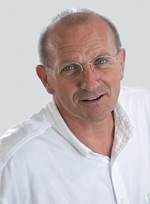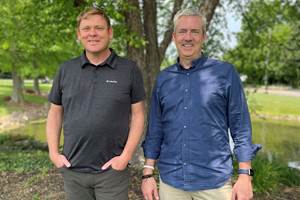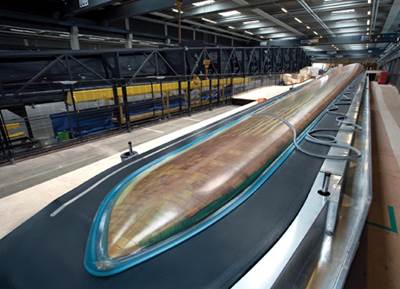Bye-bye black magic
Noting the great pressure to meet quality standards in a variety end-markets, CT editor-in-chief Jeff Sloan sees the composites community making a transition away from the old black magic to scientific process management.
I came to composites by way of the injection molding industry. Until about 15 years ago, there was a certain amount of “black magic” associated with that process. Certainly, the science of injection molding and polymer melt behavior had been well researched and reported, but the fact that much of the process occurs in a closed mold (out of sight) always imbued it with some uncertainty. On top of this, older injection molding machines were susceptible to hydraulic, mechanical and electrical degradation that could cause a mold to produce an in-spec part in one cycle, followed by an out-of-spec part the next. Because of this, some parts and machines required a fair amount of human supervision to keep process variables in check. Back in the mid-1990s, I visited a shop that was running several 1970s-vintage molding machines. According to the plant manager, these machines could “only be run by Ray on third shift because he is the only one who ‘knows’ these machines.” (I think I suggested that Ray’s health be closely monitored if so much was riding on his knowledge).
Around this same time, however, “scientific molding” started taking hold in injection molding. Engineers began to apply some basic fluid-dynamics knowledge to the process and, with the help of in-mold pressure transducers and other technologies, very quickly learned much about how melted thermoplastic resin behaves under high pressure in a closed cavity. The industry also began to understand how to keep certain machine/process parameters in spec. Within a few years the industry, on the whole, was producing higher quality parts at high speed.
The composites industry, it seems to me, is on the verge of a similar transition away from black magic to science-based consistency and repeatability. This transition is fueled, for the most part, by the dramatically expanding use of composites in a variety of high-profile but very demanding applications, ranging from commercial aircraft fuselages to wind blades. The pressure is on the composites community to conform to quality, performance, consistency and accountability standards that will require a more robust grasp of the manufacturing process. Andre Cocquyt touches on this in this issue's “Composites: Past, Present & Future” (see "The state of education ...." under Editor's Picks," at right), and links our need for production standards to our need for industry-wide education standards. And our story this issue on the use of core materials in wind blades ("Core for composites: Winds of change," under "Editor's Picks") highlights the wind industry’s demand not only for light weight, but also high-quality constructions that maximize the life, and minimize the maintenance, of composite blades.
The challenge this transition presents is substantial, however. Fabrication of composite structures is more complicated than the injection molding process. Composites present a bewildering number of variables in its vast range of resin systems, fibers and fiber forms, tooling materials and mold configurations, and manufacturing/curing/finishing processes. Understanding and controlling each variable within a certain sigma is a daunting task. It’s a challenge, however, that must be met if the composites community wants to continue to grow and offer meaningful solutions to the technical difficulties that manufacturers face today. We’re up to the task, I’m sure: This is a dynamic and creative problem-solving community. The next several years should be very interesting for all of us.
Related Content
Sustainability has come to composites and it's here to stay
It might be tempting to think of sustainability as a buzzword, but there are structural changes taking place in the composites industry that signal its permanence.
Read MoreHow composites have become a necessity
Composites used to be one of many material options across industries and applications, but that's not the case anymore.
Read MoreThe return of trade show season
SAMPE Seattle, JEC World and the Paris Air Show are approaching fast, and they signal the real emergence of a post-pandemic world.
Read MoreUp, not out: The next chapter of CompositesWorld
I have been editor-in-chief of CompositesWorld for 17 years, which translates into a lot of editorials. This will be my last as I become publisher of CW. We welcome Scott Francis back to the brand to take my place.
Read MoreRead Next
Core for composites: Winds of change
Core materials suppliers lean into the bracing breeze of big-blade challenges raised by the burgeoning wind energy industry.
Read MoreThe state of education in the composites trade, part I
Andre Cocquyt (GRPguru, Brunswick, Maine) renews his call to focus composites industry efforts on finishing and financing a comprehensive unitary composites education model at the national level.
Read MoreCW’s 2024 Top Shops survey offers new approach to benchmarking
Respondents that complete the survey by April 30, 2024, have the chance to be recognized as an honoree.
Read More












.jpg;maxWidth=300;quality=90)









